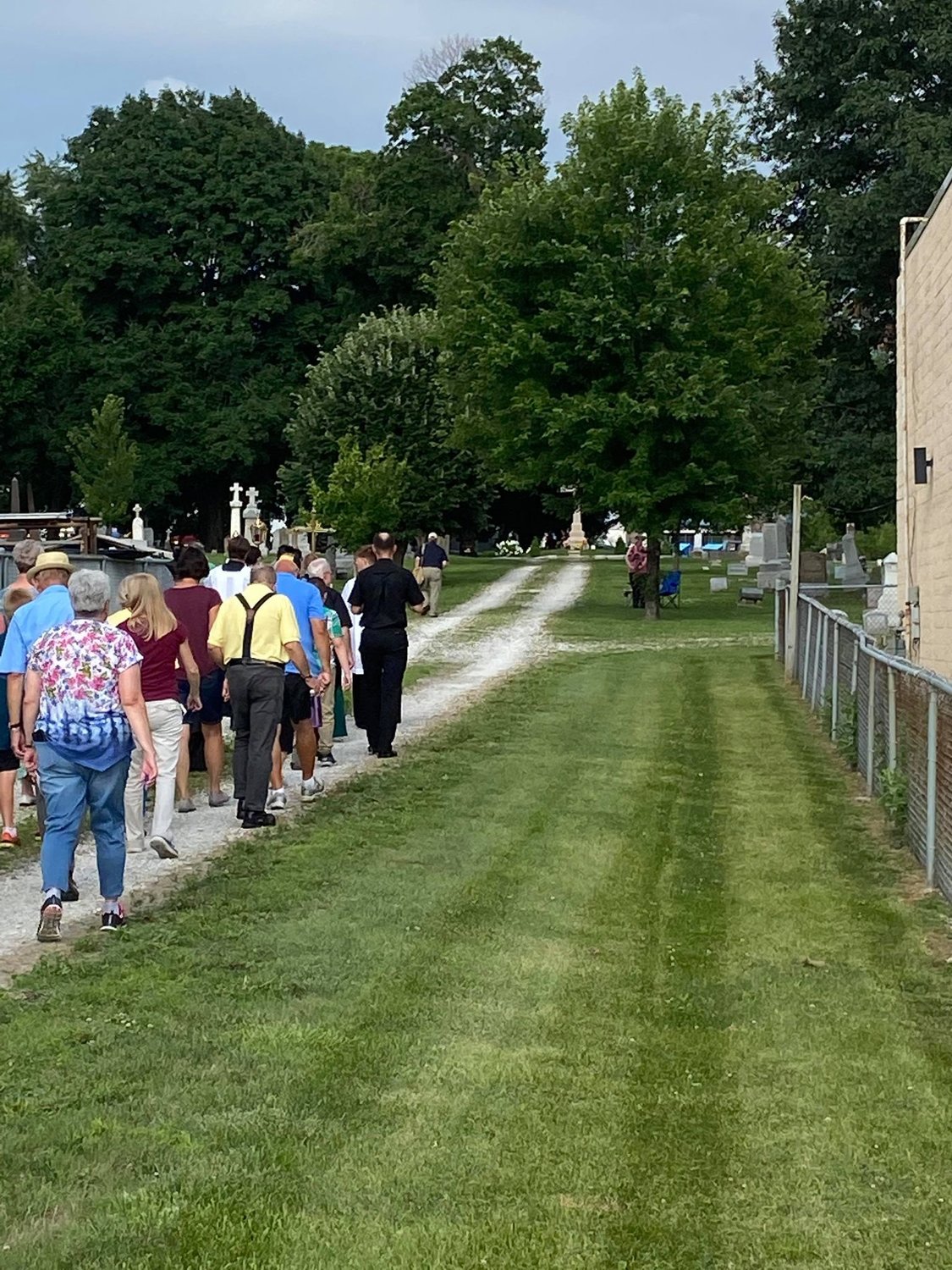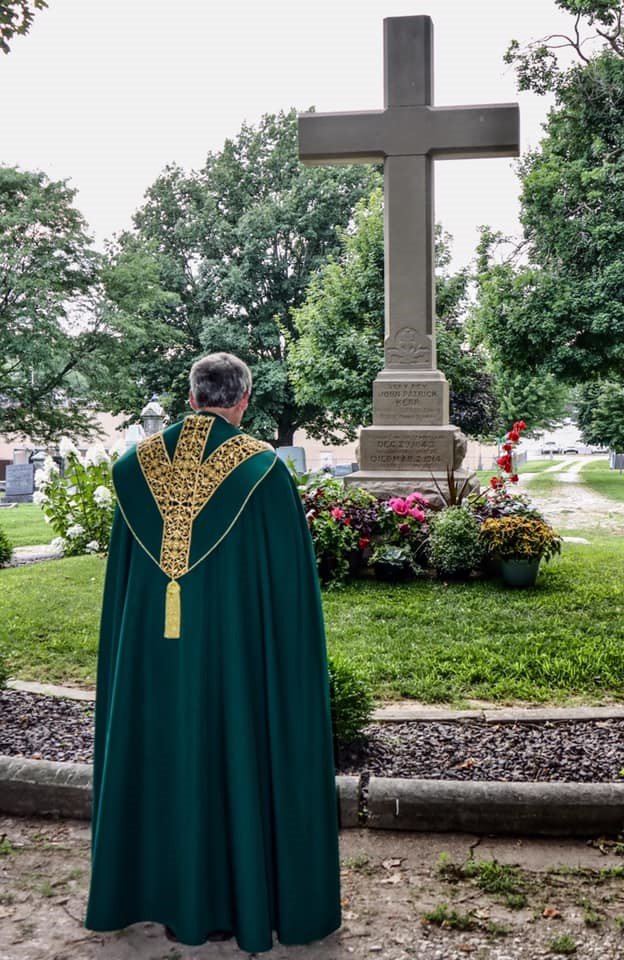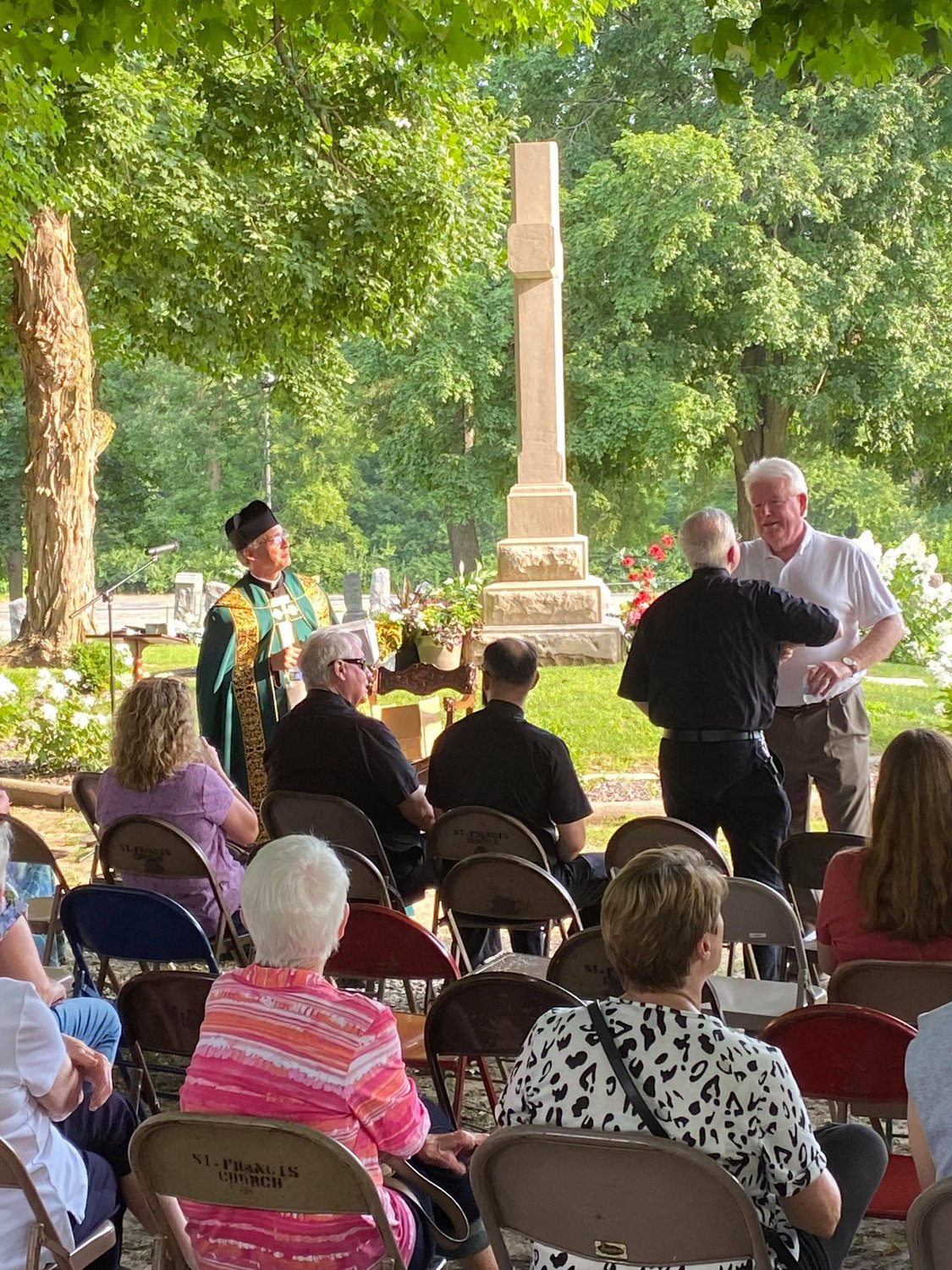Catholics across western Illinois diocese honor Venerable Father Augustine Tolton

SCROLL THE ARROWS TO SEE MORE PHOTOS.
About 135 Catholics and others devoted to the Venerable Servant of God Father Augustine Tolton, who was born in northeastern Missouri and grew up in Quincy, commemorated the 124th anniversary of his death with a pilgrimage procession in Quincy on July 9.
Fr. Tolton is recognized as the first Black priest in the United States and his cause for the beatification and canonization of sainthood is ongoing in Rome.
The mile-long pilgrimage procession began at the statue of Fr. Tolton outside St. Peter Catholic School and ended at St. Peter’s Catholic Cemetery, where Fr. Tolton’s earthly remains are buried.
Upon entering the cemetery, the procession stopped at the grave of Fr. Tolton for the celebration of Evening Prayer, which is composed of Psalms, a reading from Scripture, a homily and petitions.
Father Daren Zehnle, pastor of St. Augustine Parish in Ashland, Illinois, and a native of Quincy, preached.
“Turning our attention to the Psalms we have just prayed, the very same Psalms that Christ Jesus not only sang but also lived, we can see how they took form also in the life of Father Gus, particularly in these words from the first Psalm we prayed: ‘My enemies whisper together against me’; ‘they all weigh up the evil which is on me’ (Psalm 41:7),” Fr. Zehnle said.
“There were those who whispered against ‘Father Gus’ when he was in slavery,” Fr. Zehnle continued. “There were those who whispered against him when he was a schoolboy. There were those who whispered against him when he was teaching his fellow blacks about the Christian faith.
“There were those who whispered against him when he wanted to enter the seminary,” the priest continued. “And there were those who whispered against him when at last he was ordained a priest, forcing his removal from this Gem City.”
Despite those many whisperings, and even some shoutings, ‘Father Gus’ neither whispered nor shouted back.
“Why? Because he knew that the Lord God was his friend and trusted that he would ‘be unharmed and set in [God’s] presence for evermore,’” said Fr. Zehnle, echoing Psalm 41:11-12.
After Evening Prayer, the pilgrims prayed for an end to racism and for more priests through Fr. Tolton’s intercession, as well as for Fr. Tolton’s canonization as a saint.
The pilgrimage procession concluded with the singing of “Holy God, We Praise Thy Name,” which was Fr. Tolton’s favorite hymn.
Immaculate Conception Parish in Mattoon, Illinois, also honored Fr. Tolton on the anniversary of his death.
Father Peter Chineke, parochial vicar at the Cathedral of the Immaculate Conception in Springfield, blessed a recently completed Fr. Tolton statue, which now stands in the Immaculate Conception Parish Center in Mattoon.
The new image, sculpted by Teresa Clark of Terre Haute, Indiana, will remain in the parish center until Fr. Tolton is beatified.
Then, the statue will be moved to the altar to join the St. Mother Theodore Guerin statue, also sculpted by Clark, in the sanctuary on the “Quincy” side of the reredos.
An original script, prepared especially for this event, “Tolton, My Life,” was read by its author, Patrick Coulton of Charleston, Illinois, and Deacon Paul Lesupati of the Mattoon parish.
Immaculate Conception in has a personal connection to Fr. Tolton as in 1892, he came there to preach.
“There wouldn’t have been many African Americans in Mattoon at the time,” Father John Titus, the pastor, noted. “But Fr. Tolton was well received and many, many people came to see him.”
Fr. Tolton was born into a family of slaves in Missouri in 1854 and was baptized in St. Peter Church in Brush Creek.
In 1862, his mother and siblings made a daring escape across the Mississippi River to Illinois.
After settling in Quincy, he went to school at St. Peter’s Catholic School.
He later went to seminary school in Rome because no American seminary would accept a Black man.
Thinking he would minister in Africa, once he was ordained, he was instead sent back to Quincy, where he arrived to thousands of supporters.
Known for his incredible singing and homilies, Fr. Tolton spent several years in Quincy before transferring to Chicago.
He died of heatstroke at the age of 43 on July 9, 1897, and is buried at St. Peter’s Cemetery in Quincy.
The Archdiocese of Chicago opened a formal sainthood cause for him in 2010.
Most recently, Pope Francis declared him “Venerable” on June 12, 2019, the second step of four to becoming a saint in the Catholic Church.
Comments
Other items that may interest you
Services
The Catholic
Missourian
2207 W. Main St.
Jefferson City MO 65109-0914
(573) 635-9127
editor@diojeffcity.org











